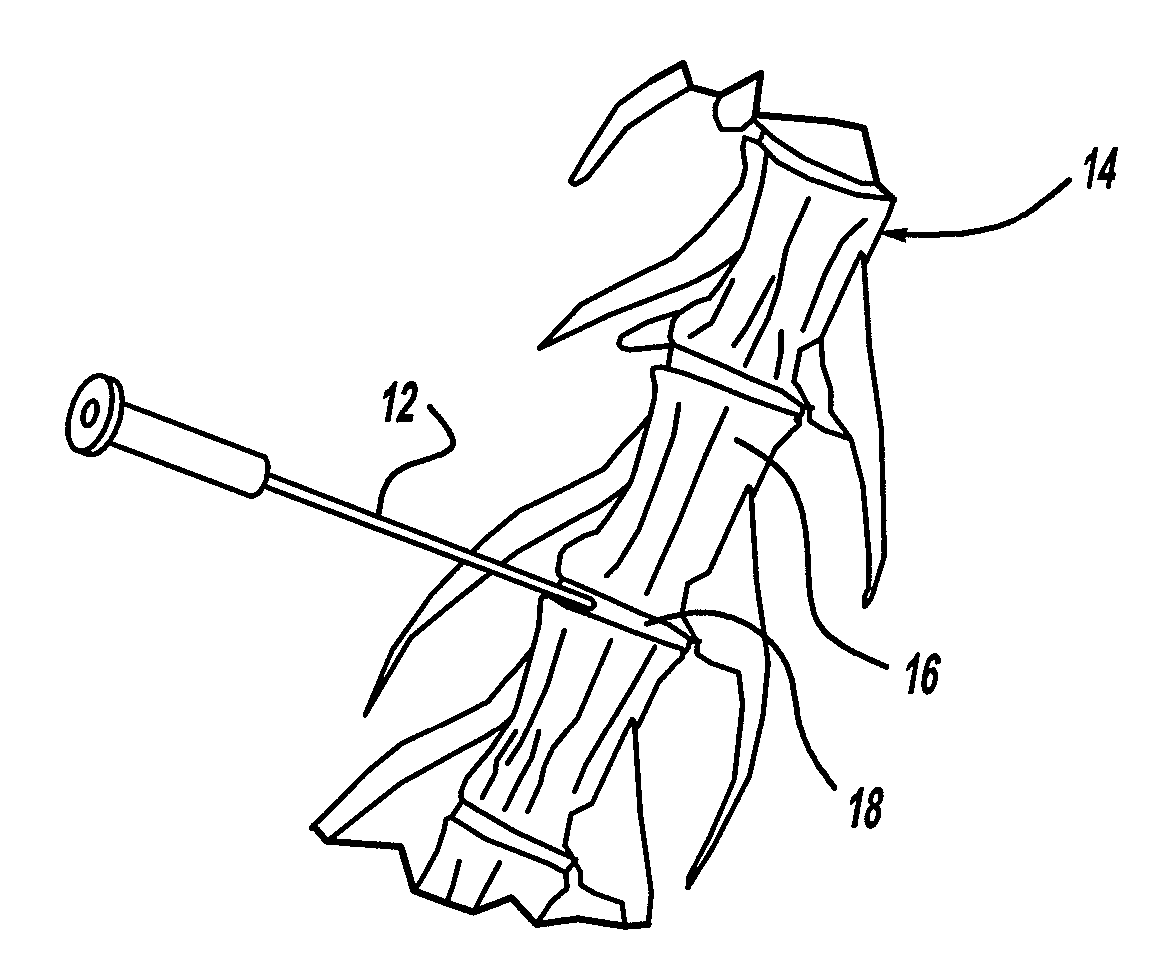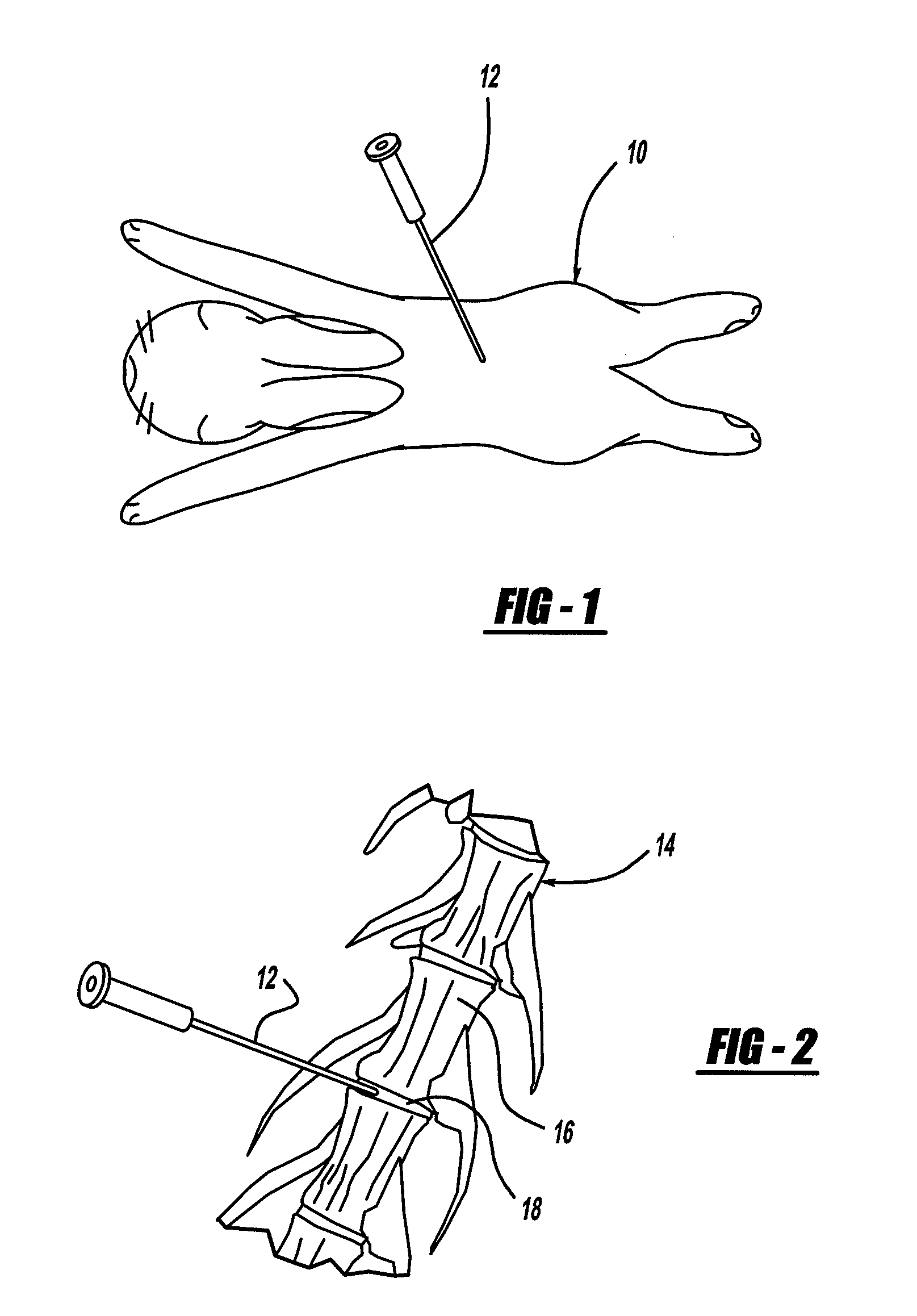Method for Providing an InVivo Model of Disc Degeneration
a disc degeneration and invivo technology, applied in educational models, medical science, surgery, etc., can solve the problems of further disc degeneration and desiccation, disc ultimately failing for cellularity, and disc drying out or desiccation, so as to reduce the rate of degeneration and quick degeneration effect of the dis
- Summary
- Abstract
- Description
- Claims
- Application Information
AI Technical Summary
Benefits of technology
Problems solved by technology
Method used
Image
Examples
Embodiment Construction
[0020] The following discussion of the embodiments of the invention directed to a method for providing an InVivo model of disc degeneration is merely exemplary in nature, and is in no way intended to limit the invention or its applications or uses.
[0021] The present invention proposes a process for providing an InVivo model of disc degeneration, where the disc degeneration occurs relatively rapidly in the model, and can be easily studied, to learn the processes of human disc degeneration, which typically occurs slowly.
[0022]FIG. 1 is a perspective view of a rabbit 10 that has been anesthetized, where one or more of the intervertebral discs in the rabbit 10 will be the InVivo model. A technician will percutaneously insert, i.e., through the skin, a needle 12 into the rabbit 10 towards an intervertebral disc of the rabbit 10. FIG. 2 is a perspective view of a spine 14 of the rabbit 10 including vertebrae 16 and discs 18 therebetween. The needle 12 is shown inserted into one of the d...
PUM
 Login to View More
Login to View More Abstract
Description
Claims
Application Information
 Login to View More
Login to View More - R&D
- Intellectual Property
- Life Sciences
- Materials
- Tech Scout
- Unparalleled Data Quality
- Higher Quality Content
- 60% Fewer Hallucinations
Browse by: Latest US Patents, China's latest patents, Technical Efficacy Thesaurus, Application Domain, Technology Topic, Popular Technical Reports.
© 2025 PatSnap. All rights reserved.Legal|Privacy policy|Modern Slavery Act Transparency Statement|Sitemap|About US| Contact US: help@patsnap.com



